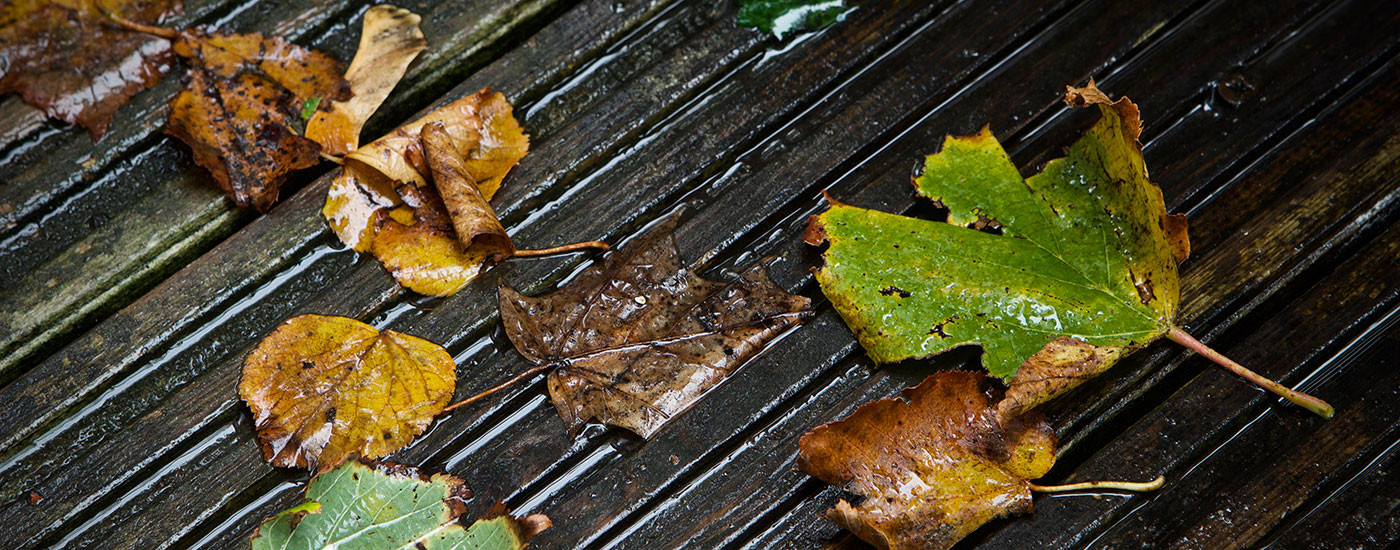As we enter that time of year when the hours of darkness outnumber the daylight hours, we will soon be experiencing the first frosts and thereafter, snow and ice! Before that happens, a few simple steps will stop your decked areas turning into ice rinks.
What makes decking slippery?
When timber decking and composite decking becomes wet, it provides the perfect conditions for mould, mildew, algae and moss to form on the surface. The accumulation of debris such as autumnal leaf fall and even pollen will encourage moisture, which in turn will provide a breeding ground for algae and moss, the main cause of slippery decking.
How to prevent slippery decking
With slippery decking, prevention is far better than cure and the best way to minimise the risk of slipping is with regular cleaning and maintenance. The following steps will help you to keep your decking as safe as possible:
Clean decking every year
Thoroughly cleaning decked areas on an annual basis is an important step in preventing slippery surfaces. Use a commercially available specialist cleaner or make your own solution of 5 tablespoons of ammonia-free laundry detergent, mixed with 1 litre of bleach and 12 litres of water. Apply the solution to the decking with a mop or a pump sprayer and leave for 15 minutes. Then scrub the decking with a long-handled brush and rinse off with a hose. The use of a pressure washer is not to be recommended as it could damage the wood but if one is used, ensure it is on a maximum pressure of 500psi and maintain a distance between the timber surface and the wand to avoid marking the decking. Move the pressure washer continually in a sweeping motion.
Clear leaves and debris regularly
Wet leaves are a major cause of slipping incidents so sweep any leaves off your decking as soon as possible, particularly after rainstorms, with a stiff-bristled brush. This will also help to prevent the build-up of slippery moss and algae. The grooves between decking boards should also be cleared with any flat-edge, such as a putty knife.
Remove ice safely
When we wake to find our decking has been transformed into an ice skating rink overnight, it can be tempting to chip away at the ice with a shovel or to throw gritting salt over it to make it melt faster. However, the decking will not thank you for either of these actions; metal tools such as shovels can weaken the decking and cause damage to timber decking (although they can be used on composite decking), while the chemicals in gritting salt can cause the metal hardware to corrode. Always use a plastic shovel to break up and remove ice and if you have to use grit, use it sparingly and always rinse it away afterwards.
Apply a protective coating
All decking should be protected with a specialist stain protector as virgin timber will absorb and retain more moisture, which in turn will encourage algae and moss. A good decking stain or wood protector will help to seal out moisture and shorten the drying time of the boards; this is particularly important for decking in shaded areas. Our range of Protek products is weather resistant and its resin content makes it hardwearing and long lasting. Decking that has been treated with a protective coating will be easier to keep clean as dirt is less likely to become ingrained in the timber and the decking surface will be easier to sweep clear of debris.
Check the condition of your decking
In the unfortunate event of someone slipping on a decked area, instinct will make them reach out for stability so check that the structural integrity of the decking is sound. Individual boards should be secure, with no wobbling, and railings should be intact with no signs of rotting. If in doubt, replace altogether. Our comprehensive decking supplies department has everything you need to repair existing decking or to create a new decked area.

